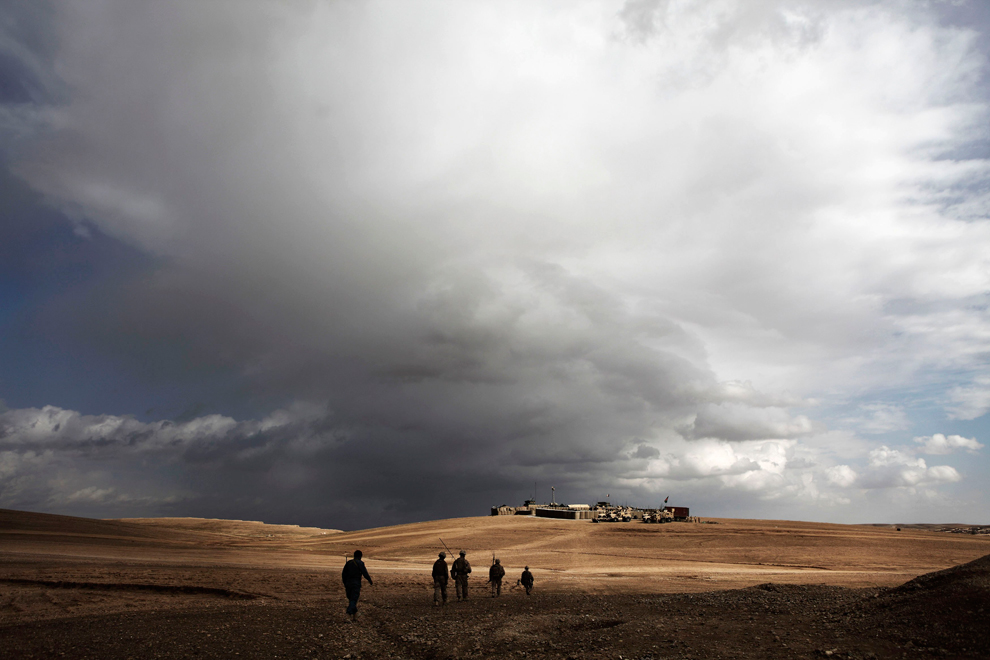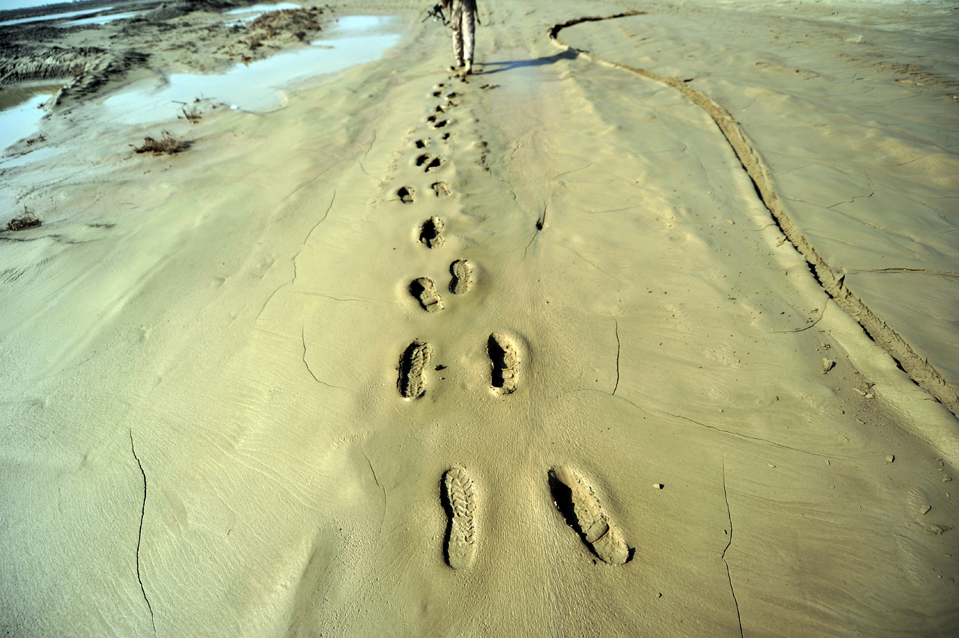It could almost be a scene from a 1950s John Ford western. The big sky, simultaneously inviting and foreboding, dominates a sprawling and deserted frontier plain. A small detachment of soldiers emerge out of the dark shadows, returning from the day’s patrol scouting renegade Indians. A distant fort is cast in the sun’s bright light, a small preserve of civilization and safety caught between the dark shadows in the foreground and the foreboding clouds approaching in the background. Only John Wayne and the horses are missing.
Of course, this is not a scene from a 1950s movie, but it does call attention to one narrative subtly (or not) implied by past and present administrations for framing the U.S. invasion of Afghanistan. Then we were taming the U.S. frontier to enable westward expansion, now we tame the Middle East in order to facilitate the demands of globalization; Apaches or Taliban, one “terrorist” is no different than the other, or at least so it would appear.
I don’t want to seem unduly cynical here. There were arguably good reasons for us to invade Afghanistan when we did in 2001 in search of Osama bin Laden whose involvement in the 9/11 attacks warranted a militant response designed to bring him to justice. But that was ten years ago. Bin Laden still remains at-large and it is highly unlikely that he is in Afghanistan, a point muted by the fact that the U.S. mission seems to have taken on the attitude of a “manifest destiny.”
President Obama has promised that we will begin to draw down our presence in Afghanistan in the summer of 2011, but Sect. of Defense Gates notes that it will be “minimal” and that we will continue to have a “security” presence past 2014. Fort Taliban, it seems, will replace Fort Apache. “Manifest destiny” was not an unproblematic rationale for westward expansion in the 19th century and it seems all the more problematic here, not least because it seems to operate as a deeply seeded and unstated assumption making it difficult to challenge.
An alternate frame for thinking about the U.S. presence in Afghanistan might be suggested by this photograph from the Helmand Province.
A single, unrecognizable soldier trudges along a sun baked, mud soaked road leaving boot prints in the sand. Past and future, left and right, are virtually indistinguishable from one another, and in any case neither seems to beckon the attention of the soldier, whose forward progress out of the top of the frame is single-mindedly directional. Where he is headed and where he has come from is unclear. What is clear is that sooner or later his boot prints will have been erased, perhaps to be replaced by another set, but maybe not. One other thing is clear as well. Once the soldier is gone, the sun baked, mud soaked road will remain.
Yes, only John Wayne and the horses are missing. And the happy ending.
Photo Credits: Finbarr O’Reilly/Reuters; Adek Berry/AFP/Getty


I wonder if the photographers realize that their images repeat tired and distasteful tropes about American national identity? The vast landscape–open to American manipulation, interference, and control is a visual metaphor for a national idea that we have a right to inhabit this (uninhabited? uncivilized? unruly?) land. During the era of Manifest Destiny, landscape painters created vast scenes of Westward “Expansion” that showed empty lands ripe for occupation and development. The people of these lands appeared in the margins–Indians as a vanishing race, and incidental to the needs and desires of colonialism. These photos repeat a comforting idea about Americans and their “right” to invade, control, and conquer other lands.
[…] must-read, No Caption Needed’s take on Fort Taliban It could almost be a scene from a 1950s John Ford western. The big sky, simultaneously inviting […]